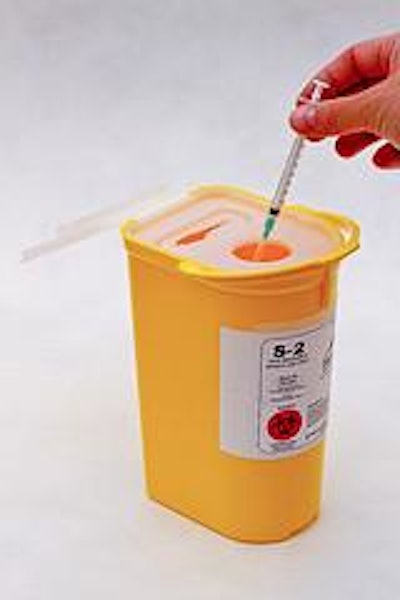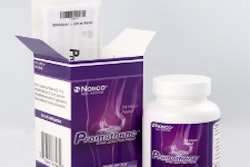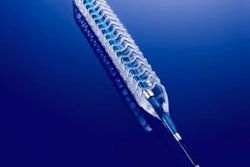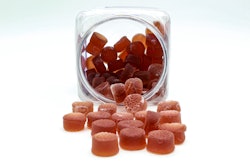
The U.S. Food and Drug Administration's new Web site for patients and caregivers focuses on the safe disposal of needles and other so-called "sharps" that are used at home, at work, and while traveling.
The site aims to help people understand the public health risks created by improperly disposing of used sharps and how users should safely dispose of them.
Sharps is a term for medical devices with sharp points or edges that can puncture or cut the skin. Such medical devices include hypodermic needles and syringes used to administer medication; lancets or finger-stick devices to collect blood for testing; needle and tubing systems for infusing intravenous and subcutaneous medicines; and connection needles used for home hemodialysis.
After being used, many sharps end up in home and public trashcans or flushed down toilets. This kind of improper disposal puts people, such as sanitation workers, sewage treatment workers, janitors, housekeepers, family members, and children at risk for needle-stick injuries or infection with viruses such as Hepatitis B and C and Human Immunodeficiency Virus (HIV).
"Safe disposal of used needles and other sharps is a public health priority," says Jeffrey Shuren, M.D., director of the FDA's Center for Devices and Radiological Health. "This Web site provides information about how to keep used sharps from ending up in places where they could harm people."
With more diseases and conditions such as diabetes, cancer, allergies, arthritis, and HIV being managed outside of hospitals and doctors' offices, the number of sharps used in homes and work offices is increasing. In addition, pets are being treated in homes and livestock are being treated on farms, which are also contributing to the increased number of sharps outside of veterinary hospitals.
The U.S. Environmental Protection Agency estimates that more than 3 billion needles and other sharps are used in homes in the U.S. each year.
Sharps disposal guidelines and programs vary by jurisdiction. For example, in 2008, California passed legislation banning throwing needles in household trash. Florida, New Jersey, and New York have established community drop-off programs at hospitals and other healthcare facilities.
People using sharps at home or work or while traveling should check with their local trash removal services or health department to find out about disposal methods available in their area.
For the safe disposal of needles and other sharps used outside of the health care setting, the FDA recommends doing the following:
• Immediately place used sharps in an FDA-cleared sharps disposal container to reduce the risk of needle-sticks, cuts, or punctures from loose sharps. (A list of products and companies with FDA-cleared sharps disposal containers is available on the FDA Web site. Although the products on the list have received FDA clearance, all products may not be currently available on the market.)
• If an FDA-cleared container is not available, some associations and community guidelines recommend using a heavy-duty plastic household container as an alternative. The container should be leak-resistant, remain upright during use and have a tight fitting, puncture-resistant lid, such as a plastic laundry detergent container.
• Keep sharps and sharps disposal containers out of reach of children and pets.
• Call your local trash or public health department in your phone book to find out about sharps disposal programs in your area.
• Follow your community guidelines for getting rid of your sharps disposal container.
FDA's "do-not" list includes the following:
• Throw loose sharps into the trash.
• Flush sharps down the toilet.
• Put sharps in a recycling bin; they are not recyclable.
• Try to remove, bend, break, or recap sharps used by another person.
• Attempt to remove a needle without a needle clipper device.
-Jim Butschli, Editor-in-Chief, Healthcare Packaging
The site aims to help people understand the public health risks created by improperly disposing of used sharps and how users should safely dispose of them.
Sharps is a term for medical devices with sharp points or edges that can puncture or cut the skin. Such medical devices include hypodermic needles and syringes used to administer medication; lancets or finger-stick devices to collect blood for testing; needle and tubing systems for infusing intravenous and subcutaneous medicines; and connection needles used for home hemodialysis.
After being used, many sharps end up in home and public trashcans or flushed down toilets. This kind of improper disposal puts people, such as sanitation workers, sewage treatment workers, janitors, housekeepers, family members, and children at risk for needle-stick injuries or infection with viruses such as Hepatitis B and C and Human Immunodeficiency Virus (HIV).
"Safe disposal of used needles and other sharps is a public health priority," says Jeffrey Shuren, M.D., director of the FDA's Center for Devices and Radiological Health. "This Web site provides information about how to keep used sharps from ending up in places where they could harm people."
With more diseases and conditions such as diabetes, cancer, allergies, arthritis, and HIV being managed outside of hospitals and doctors' offices, the number of sharps used in homes and work offices is increasing. In addition, pets are being treated in homes and livestock are being treated on farms, which are also contributing to the increased number of sharps outside of veterinary hospitals.
The U.S. Environmental Protection Agency estimates that more than 3 billion needles and other sharps are used in homes in the U.S. each year.
Sharps disposal guidelines and programs vary by jurisdiction. For example, in 2008, California passed legislation banning throwing needles in household trash. Florida, New Jersey, and New York have established community drop-off programs at hospitals and other healthcare facilities.
People using sharps at home or work or while traveling should check with their local trash removal services or health department to find out about disposal methods available in their area.
For the safe disposal of needles and other sharps used outside of the health care setting, the FDA recommends doing the following:
• Immediately place used sharps in an FDA-cleared sharps disposal container to reduce the risk of needle-sticks, cuts, or punctures from loose sharps. (A list of products and companies with FDA-cleared sharps disposal containers is available on the FDA Web site. Although the products on the list have received FDA clearance, all products may not be currently available on the market.)
• If an FDA-cleared container is not available, some associations and community guidelines recommend using a heavy-duty plastic household container as an alternative. The container should be leak-resistant, remain upright during use and have a tight fitting, puncture-resistant lid, such as a plastic laundry detergent container.
• Keep sharps and sharps disposal containers out of reach of children and pets.
• Call your local trash or public health department in your phone book to find out about sharps disposal programs in your area.
• Follow your community guidelines for getting rid of your sharps disposal container.
FDA's "do-not" list includes the following:
• Throw loose sharps into the trash.
• Flush sharps down the toilet.
• Put sharps in a recycling bin; they are not recyclable.
• Try to remove, bend, break, or recap sharps used by another person.
• Attempt to remove a needle without a needle clipper device.
-Jim Butschli, Editor-in-Chief, Healthcare Packaging



















